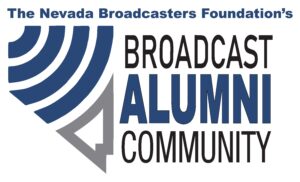The transition to ATSC 3.0, the next generation of television transmission, is underway as authorized by the Commission in 2017 (see our post here and our posts here, here and here on subsequent actions making that order effective and allowing TV stations to file to convert to the new standard). This week, the FCC released a draft of an item to be considered at its June open meeting dealing with lingering legal issues about the services to be provided by television stations that are part of this transition. The item to be considered, if adopted in June, will take two actions. First, it will issue a declaratory ruling that the leasing of auxiliary and supplementary spectrum capacity on digital television stations for non-broadcast uses does not trigger the application of the FCC’s multiple ownership rules, which limit the number of stations that one entity can own or program in any given TV market. Secondly, the item will issue a Notice of Proposed Rulemaking to address what regulatory changes, if any, are needed to govern the types of non-broadcast content that will be provided by stations operating with this next generation television transmission standard.
The declaratory ruling addresses concerns that the use of broadcast television spectrum by various companies or consortia that plan to use that spectrum for all sorts of non-broadcast applications could trigger violations of the FCC’s ownership rules. Those rules limit one owner from owning (or providing more than 15% of the broadcast programming to) more than two television stations in a given TV market (and only one station in some smaller markets). When stations convert to ATSC 3.0, there are plans to offer a plethora of non-broadcast services, which the FCC describes in its draft decision as “Broadcast Internet” services. These services could include sending updates to smart dashboards in automobiles and in other Internet of Things smart devices, updating utility meters, providing telehealth and emergency communications information, distributing smart agriculture applications, or distributing popular pay-video programming to user’s devices. In many cases, to provide these applications, one company or consortium would seek to lease the ancillary and supplementary capacity of multiple stations in a market to assure that content was distributed as broadly as possible. The fear was that such users leasing capacity on multiple stations could be deemed to have an “attributable interest” in such stations for multiple ownership purposes or simply for purposes of having to be reported on ownership reports and other broadcast applications.
In the draft declaratory ruling, the FCC seeks to allay these fears. It proposes to clarify that its broadcast ownership and attribution rules apply only to the provision of free over-the-air broadcast programming to viewers, and not to these Broadcast Internet services. The FCC looks at the history of its broadcast ownership rules and decides that these rules were meant to assure the diversity of video programming to the public, not to regulate these non-broadcast services, and declares that the leasing of ancillary and supplementary spectrum capacity to providers of such services would not trigger application of the ownership rules.
In addition to that decision, the item if adopted as set out in this week’s draft, would initiate a rulemaking proceeding to look at what other FCC rules need to be amended to deal with the new services that can be provided through Broadcast Internet services. The FCC asks questions in a number of areas including the following:
- Whether there are existing FCC rules that impede the development of Broadcast Internet services.
- Whether particular services will develop in different ways and whether the rules need to be adapted to allow for such development. These include specific inquiries into:
- how noncommercial educational television stations will use this Broadcast Internet capacity and whether there needs to be clarifications as to how the rules against advertising on noncommercial television stations should be applied to these non-broadcast services
- whether LPTV stations are more likely to roll out the new Broadcast Internet services and whether any regulatory changes are needed for these stations
- How should the FCC define the standard definition free broadcast service that all TV stations must provide? The FCC suggests that a 480i resolution minimum service should be required.
- How should fees be assessed for these non-broadcast services? The FCC currently collects a percentage of the revenue generated by these services. Among the specific questions asked were:
- Should the fees be lower or even zero for certain publicly beneficial services, like emergency communications and telehealth uses?
- The FCC proposes that the fees be based on the income received by the licensee and any affiliates of the licensee – but revenues received by the independent third-parties leasing the spectrum should not be included in determining the fees to be paid.
- Should there be caps on the fees?
- Should the reporting of revenue for these services be changed?
- Where broadcasters provide services that are similar to services provided by other non-broadcast entities that are regulated by the FCC, should the rules that apply to these analogous services apply to the Broadcast Internet services? If so, which services are analogous?
These are highlights of the more detailed questions set out in the draft Notice of Proposed Rulemaking. All interested parties should carefully read the draft item, watch the FCC discussion at its June meeting, review the final document that is adopted by the FCC, and participate in the rulemaking proceeding that will follow that will help to determine the regulations that will apply to these next-generation television services.
Courtesy Broadcast Law Blog


